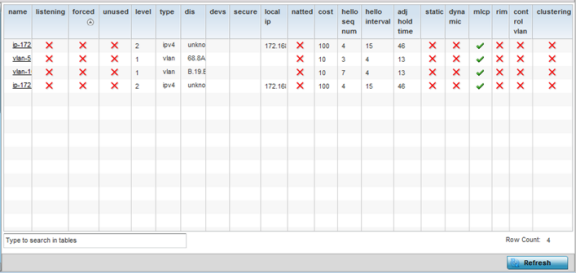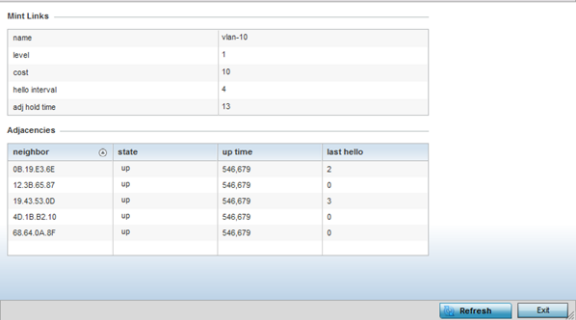Wireless controllers and APs use the MiNT protocol as the primary means of device discovery and communication for AP adoption and management. MiNT provides a mechanism to discover neighbor devices in the network, and exchange packets between devices regardless of how these devices are connected (L2 or L3).
MiNT Links are automatically created between controllers and APs during adoption using MLCP (MiNT Link Creation Protocol). They can also be manually created between a controller and AP (or) between two APs. MiNT links are manually created between controllers while configuring a cluster.
Level 2 (or) remote MiNT links are controller aware links, and requires IP network for communication. This level 2 MiNT links at access points are intended for remote Adaptive AP deployment and management from NOC. With Level2 MiNT links, access points are only aware of the controllers and not about other APs. Level 2 MiNT links also provide partitioning, between APs deployed at various remote sites.
To view access Mint link statistics:

The Mint Links screen lists the name of the impacted VLAN or link in the form of a link that can be selected to display more granular information about that VLAN. A green check mark or a red X defines whether the listed VLAN is listening to traffic, forced to stay up or unused with the Mint link. The level column specifies whether the listed Mint link is traditional switching link (level 2) or a routing link (level 3). The type column defines whether the listed Mint link is a VLAN or an IPv4 or IPv6 type network address. The dis column lists how each link was discovered.
Refer to the secure column to assess whether the listed links are isolated between peers. The local ip column lists the IP address assigned as the link‘s end point address, not the interface‘s IP address. The natted column lists whether the link is NAT enabled or disabled for modifying network address information in IP packet headers in transit. The cost column defines the cost for a packet to travel from its originating port to its end point destination.
The hello seq number and hello interval columns define the interval between hello keep alive messages between link end points. While the adj hold time sets the time after the last hello packet when the connected between end points is defined as lost.
The static and dynamic link columns state whether each listed link is static route using a manually configured route entry, or a dynamic route characterized by its destination. The rim column defines whether the listed link is managed remotely. The control vlan column states whether the listed link has enabled as a control VLAN. Lastly, the clustering column states whether listed link members discover and establish connections to other peers and provide self-healing in the event of cluster member failure.

The first table lists the Mint link‘s name and level specifying whether the Mint link is traditional switching link (level 2) or a routing link (level 3). The cost defines the cost for a packet to travel from its originating port to its end point destination. The hello interval lists the time between hello keep alive messages between link end points. The adj hold time sets the time after the last hello packet when the connected between end points is defined as lost.
The Adjacencies table lists neighbor devices by their hardware identifiers and operational state to help determine their availability as Mint link end points and peers. The up time lists the selected link‘s detection on the network and the last hello lists when the last hello message was exchanged.